Loddon |
|
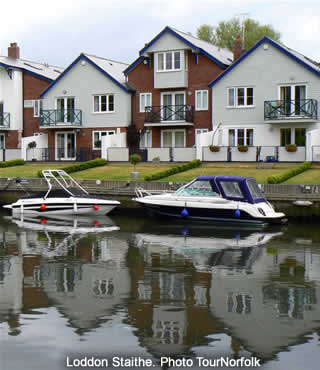 |
|||
Britain > Norfolk Broads > Loddon |
|||||
A lovely broadland village with plenty of historic buildings and beautiful walks |
|||||
|
|||||
Loddon was first mentioned in the will of Aelfric Modercope written around 1042. Aelfric held some 450 acres of land in Loddon and was by far the biggest landowner. His manor house is believed to have been close by the church overlooking the river and the fields are known as Manor Yards. He favoured the poor and he has become an icon of Loddon, with his statue standing proud on the village sign. The name Loddon actually means "Muddy River" and the river has always been a source of much of the industry in the town with wherries delivering goods to the various businesses; but over the past century it has become more of a leisure attraction for pleasure boats. |
|||||
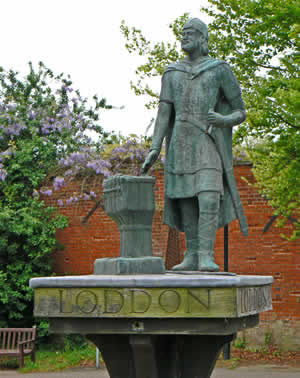 Loddon Village Sign, showing Aelfric Modercope |
|||||
The water at Loddon Staithe is the River Chet, which joins the River Yare near Reedham. The route takes you through some of the most beautiful water meadow on the Norfolk Broads, especially in summer, when all the flowers burst into colour. Near the staithe is Loddon Watermill which was built in the 18th century with the river diverted to run underneath it. The mill is no longer running and is one of the earliest recorded buildings in the town. |
|||||
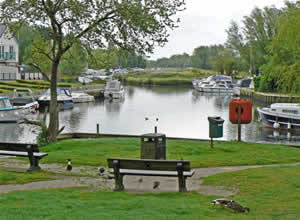 Loddon Staithe, with 24 hour moorings for visiting boats |
|||||
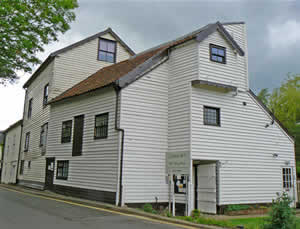 Loddon Mill, now a Well Being Centre |
|||||
The High Street contains many architectural and historical buildings and the whole of Loddon's main thoroughfare is designated a conservation area. Most of these buildings have been converted to shops and services, including butchers, newsagent, take-away's, estate agents, tea-rooms, chemists and a post office - to name just a few! You will also find 3 pubs, the Swan, the Angel and the Kings Head. |
|||||
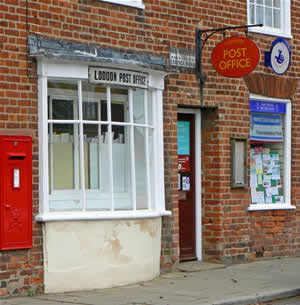 Loddon Post Office |
|||||
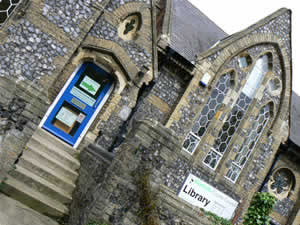 Loddon Library, once the local school and dating to the 1850's |
|||||
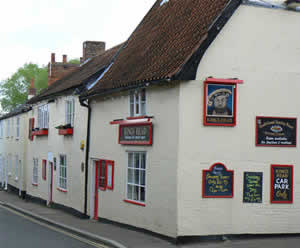 The Kings Head, the first of three pubs you will come across walking from the staithe towards the village centre |
|||||
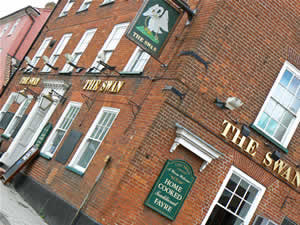 The Swan is the second of the three pubs in Loddon and was once a coaching inn |
|||||
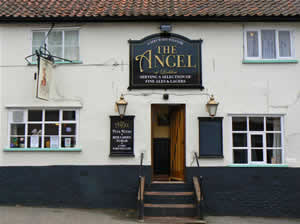 The Angel is the oldest pub in Loddon |
|||||
Loddon Holy Trinity Church was built around 1490 by Sir James Hobart and probably replaced an earlier church on the same site. It is a classic Norfolk medieval church, perpendicular in style, with a square tower which is visible for miles over the nearby marshes. Inside, the interior contains a hammerbeam roof, painted rood screen, Jacobean pulpit, Victorian pews with carved poppy-head ends, several table-top tombs and an ancient poor-box. Above the porch of the church is a small room reached by a spiral staircase. This room is known as the Priest's room after it was used for overnight accommodation for visiting Priests and it is now the home of a permanent exhibition of historical information about Loddon, the Church and the local environment. |
|||||
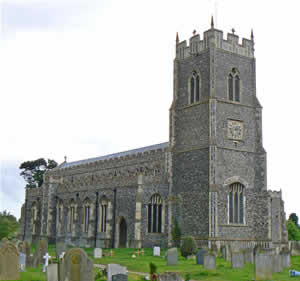 Loddon Church |
|||||
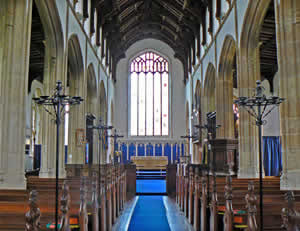 Inside the Church |
|||||
|
|||||
|
|||||
Loddon Tourist Information, The Old Town Hall, 1 Bridge Street, Loddon, NR14 6LZ. Tel: 01508 521 028 |
|||||
Car-parking can be found at the village staithe (free). |
|||||
|
Pocket Britain is optimised for use on a smartphone or tablet with internet access. All content is subject to copyright. All reasonable methods have been used to ensure information supplied is accurate at the time of publication. However, it is advisable to check information before relying on it. Privacy Policy |